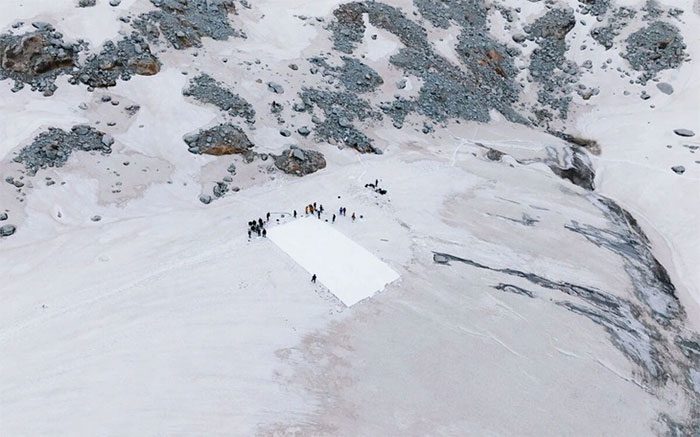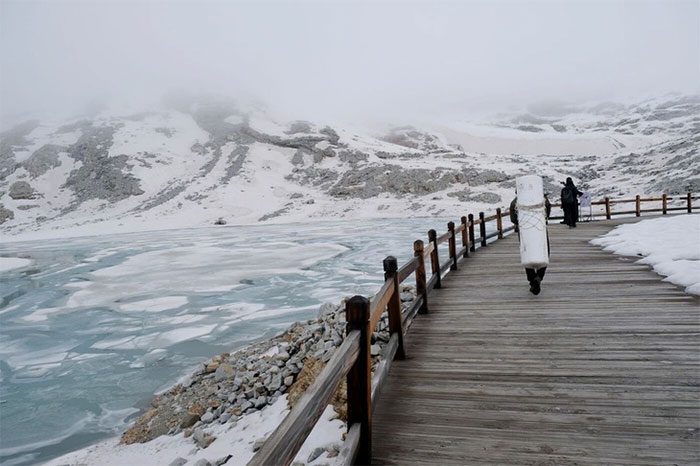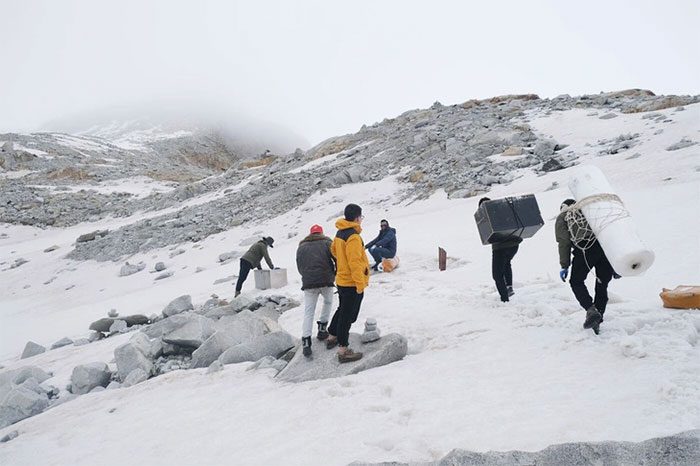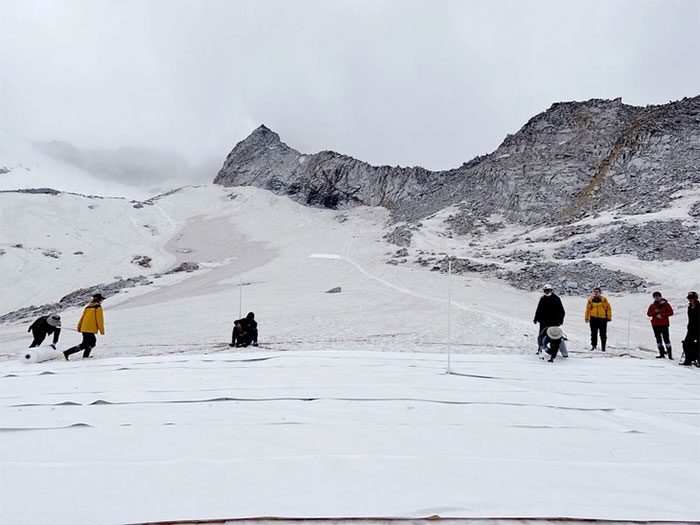Covering glaciers in the Tibetan Plateau, according to Chinese scientists, is merely a temporary solution as global temperatures continue to rise.
The thin air enveloped a group of scientists trudging through snow and ice near the summit of Dagu Glacier in southwest China on a gloomy June morning.

Scientists from Nanjing University cover part of Dagu Glacier with a reflective sunshade on June 30 – (Photo: TENCENT)
At an altitude of 4.8 km above sea level, the space is quiet except for the sound of flowing water – a constant reminder of the melting ice right beneath their feet.
Slowing Glacier Melting
As the scientists ascended, oxygen tanks were stuffed into their fleece jackets, while porters alongside carried thick rolls of white fabric.
The researchers planned to spread these sheets over more than 400 m2 of the mountain. The films affixed to the fabric are designed to reflect sunlight back into the atmosphere, shielding the glacier from heat and hoping to preserve some of its ice.

A person carrying a roll of white fabric to cover the glacier – (Photo: BLOOMBERG).
For decades, Dagu has supported the lives of tens of thousands of people living around it.
The melting water from the glacier provides drinking water and aids in hydropower production. Meanwhile, the majestic scenery of the Tibetan Plateau attracts over 200,000 tourists each year, creating jobs for more than 2,000 people.
Now all of this is under threat as the planet warms.
Chinese scientists are not under any illusions that their project will save Dagu. The glacier has lost more than 70% of its ice over the past half-century.

Choosing a location to lay down the white material – (Photo: BLOOMBERG)
One researcher described such efforts as akin to a doctor simply trying to extend the life of a terminally ill patient by a few years.
The only real cure is to drastically reduce the carbon dioxide emissions that are warming the Earth, with China being the largest source in the world.
Zhu Bin, a 32-year-old associate professor at Nanjing University leading the expedition, emphasized: “All the human intervention methods we are researching, even if they prove effective, will only slow down the melting process.”
Testing New Materials
Scientists from Nanjing University covered part of Dagu Glacier with reflective sunshade material on June 30.
Using reflective sheets to cover glaciers is not a new idea. Ski resorts in Europe have used white blankets to protect snow for nearly two decades.
However, China has only recently begun experimenting with this approach. Small trials conducted on a glacier in Xinjiang and Dagu starting in 2020 seem to have slowed their melting process.
This time, Zhu’s team is testing a new type of material that their research suggests can reflect over 93% of sunlight and help Dagu actively cool down.
The film is made from cellulose acetate, a natural fiber derived from plants, aimed at minimizing environmental impact. This material can also be used in small particles dispersed by drones over more inaccessible glaciers.

Spreading white sheets over Dagu Glacier – (Photo: TENCENT).
Previous studies have shown that covering parts of glaciers with special materials can reduce ice melt by 50-70% compared to unprotected surfaces.
The experiment will continue for 3-5 years, after which scientists will decide whether to use this material on other glaciers in China or even export it abroad.
It took tens of millions of years for the Tibetan Plateau to rise to its current height. Tectonic plates in India and Asia collided, causing the upper part to be cold enough to host glaciers and snow, providing water to nearly all major rivers in the region, including the Ganges, Mekong, and Yangtze. These rivers are the lifeline for billions of people across Asia. Yet now the plateau has lost more than 15% of its glaciers in just 50 years. |




















































